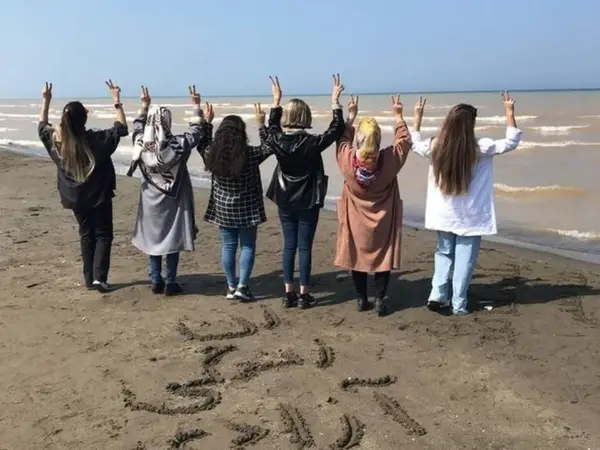Since Mahsa Amini was beaten to death by hijab enforcers in September, sparking nationwide revolt, the simple act of unveiling in public has been a thorn in the side of the regime.
Despite numerous new measures to curb the trend, more women are daring to be seen without headscarves on streets, in public buildings, and on social media, shaking the foundations of the theocratic dictatorship to the core.
Life after the Mahsa Amini incident will never be the same. For many, the hijab has gone for good but the country’s hardliners will not relent in their battle.
In a determined statement on Thursday, the Islamic Republic’s Interior Ministry described the hijab as "one of the foundations of the civilization of the Iranian nation" and "one of the practical principles of the Islamic Republic.”
"There has not been and will not be any retreat or tolerance in religious principles and rules and traditional values, and hijab, as an unquestionable religious necessity, will always be one of the practical principles of the Islamic Republic of Iran," read the statement.
But, never have Iranians been forced to cover their hair throughout their millennia-old culture, and the Islamic Republic – along with Taliban Islamist extremist group in Afghanistan — is the only Muslim country with such a strict interpretation of hijab and nationwide coercive measures for its observance.
The unrest created since the death in morality police custody of 22-year-old Mahsa Amini has made it increasingly difficult to enforce the mandatory Islamic dress code which has become a symbol of revolution.
The tide against the hijab was never as strong as it is today. Anti-hijab campaigns such as ‘White Wednesdays’, ‘Girls of Enghelab Street’, ‘No to Mandatory Hijab’, and ‘Sneaky Freedoms’, have been branded plots by “the enemy” to disrupt the idea in the minds of Iranian women.
The mere existence of so many campaigns against the obligatory dress code is indicative of its low popularity among the people.
In addition to the regime suggesting that the anti-hijab movement is "one of the axes of the enemies’ cognitive war against the nation”, the Interior Ministry has also called the “Women, Life, Liberty” -- the main motto of the current wave of anti-regime protests – a “demagogic slogan” devised by the intelligence agencies of adversaries to conceal their evil intentions.
The conspiratorial statement - typical of the regime rhetoric - claimed that the schemes of the movement have been foiled but the people but did not explain that if such is the case, why the Islamic Republic has been intensifying measures to enforce hijab. Workshops and seminars are being pushed on women to quash the female-led uprising against the regime’s hackneyed propaganda lines.
The ministry has also incited numerous clashes as it urged organizations as well as ordinary citizens to confront women who unveil in public, emboldening the hardliners to attack women and girls with loose-fitting hijab in public because they know the authorities will back them in courts if the rows lead to judicial cases.
Earlier in the week, it was announced that women could be fined as much as $60,000 for flouting hijab observance when a new law to enforce the Islamic dress code is passed by parliament.
These penalties will apply to passengers who do not abide by the hijab rules everywhere from in private vehicles to schools, restaurants and even in cyberspace. Nobody is above the law either, celebrity or otherwise, said lawmaker Hossein Jalali.
As surveillance intensifies, the regime also plans to use CCTV cameras and facial recognition technology to identify women who flout the hijab, and use cash fines and social restrictions to punish them including blocking their bank account and banning them from internet access or using governmental services.
Since the death of Mahsa Amini, the morality police may have had to step back from public life somewhat, but the swell of rebellion remains a bitter pill for the regime to swallow as they seek new means of oppression.
Four decades after the Islamic Republic forced women to wear headscarves, it is clear that change is afoot. Who knows what will be in the near future, but the tide has turned and no matter the levels of oppression and surveillance, there is no doubt there is no going back. The regime is fighting a losing battle and it has lost the hearts and minds of its people.
Women are prepared to sacrifice their lives to ensure the futures of the next generation and we are witnessing a resilience even the tools of dictatorship seem unable to quash.
